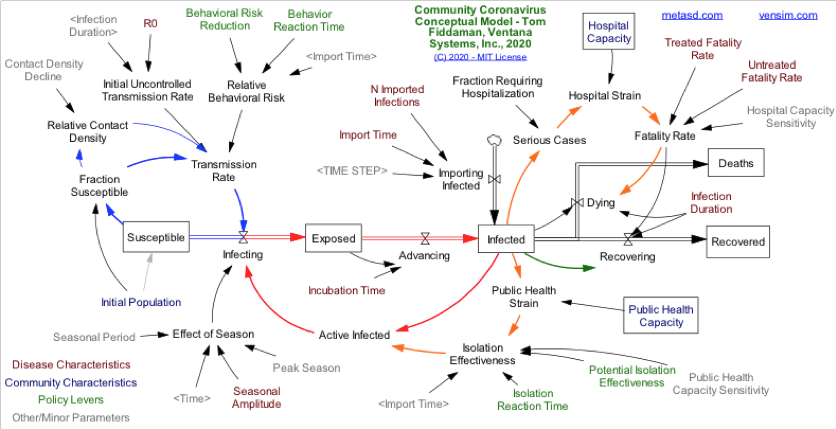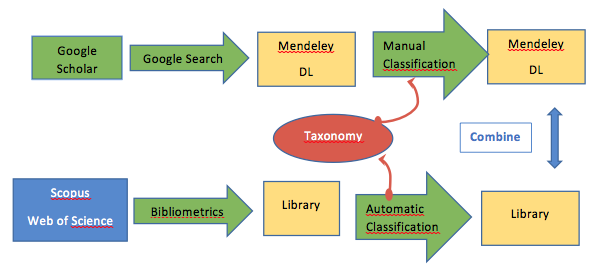Offers in: Engineering in Industrial Organisation
Academic Supervisor:
Luis Vitores Valcárcel García
department Tecnun CEIT:
ICT Division
subjectarea :
Mathematical Optimization, Data Science
Description and Objectives:
development of a Python application to automate exploratory data analysis (EDA) and predictive regression modeling.
The goal is to build a tool able to read a database (CSV/SQL), automatically classify variables (numerical, categorical), perform univariate and bivariate statistical studies (correlations, graphs) and, finally, automatically apply and compare regression models for a variable of interest. The goal is to offer a robust software for the quick start of Data Science projects.
Proposed Activities:
-
Review of AutoEDA and AutoRegression techniques.
-
Intake module : Data reading and automatic classification of variables.
-
EDA module : Implementation of statistical studies and automatic graphs (univariate and relationship between variables).
-
Regression module : Automatic preprocessing and fitting/comparison of multiple regression algorithms (simplified AutoML).
Username interface: development of an interface (e.g., Shiny) for the visualization of results and insights.
Academic Supervisor:
Luis Vitores Valcárcel García
department Tecnun CEIT:
CEIT - ICT Division
area subject:
Mathematical Optimization, Data Science
Description and objectives:
The maintenance scheduling problem, known as the Maintenance Scheduling Problem or Maintenance Scheduling Problem, consists of organizing maintenance activities within a schedule in an optimal manner. This problem seeks to minimize interruptions and operating costs by ensuring that both preventive and corrective maintenance are performed at the appropriate times.
The goal of this final Degree project is to develop an optimization tool that addresses the efficient scheduling of maintenance schedules. The tool will be developed preferably in Python, with additional Matlab or R options.
Proposed activities for the student:
Bibliographic review of the most common optimization problems and algorithms applied in maintenance scheduling.
2. Mathematical formulation of the problem, establishing the relevant criteria and restrictions.
3. Implementation of the solution using a heuristic optimization algorithm or open source solvers.
4. Analysis of results and comparison of the effectiveness of the applied approach , with recommendations for its use in different maintenance situations.
Academic Supervisor:
Luis Vitores Valcárcel García
department Tecnun CEIT:
CEIT - ICT Division
area subject:
Mathematical Optimization, Data Science
Description and objectives:
The application of time-dependent covariates in survival analysis has improved the prediction of time to default in behavioral credit scoring models. However, when these covariates are endogenous, two problems occur: estimation bias and the lack of a framework to predict the future values of the event and the covariates.
Joint models are a statistical approach that simultaneously integrates longitudinal and survival data, allowing to model the joint evolution of an event of interest (such as time to default) and time-dependent endogenous covariates. This project explores for the first time the application of discrete-time joint models to credit scoring, and proposes a novel extension by including autoregressive terms in the endogenous covariates.
The project will apply these methods to U.S. mortgage data, evaluating whether discrete-time joint models improve predictive accuracy compared to traditional survival models and whether performance is optimized by including an autoregressive term.
Proposed activities for the student:
1. Literature review on joint models and their application in credit scoring.
2. Mathematical formulation of the joint model in discrete time.
3. Implementation of the model in R or Python.
4. Analysis of results, comparing predictive performance against other models.
This project will allow the student to explore advanced statistical modeling techniques applied to financial data and improve predictions in the context of credit risk.
contact:
Juan Carlos Ramos(jcramos@tecnun.es)
Estimated duration 300-350 h
Context
Under the Chair Company Tecnun - SAPA has been designing a high speed gear test bench. The test bench now requires an evaluation of the manufacturing and assembly costs to preliminarily determine the expense to materialize the test bench.
Objectives
To understand the operation of the bench and the arrangement of its elements, as well as its characteristics and its manufacturing and assembly process. Collect all the information from the bench necessary to calculate the value of each element. Employ cost analysis software to make a detailed count and total sum. Provide the results in a justified manner.
Skills
-
Siemens NX Viewer
-
Microsoft Dynamics
-
Microsoft Excel
-
teamwork
-
Communication
Description and objectives:
The wood industry generates a large amount of leftover materials, both wood and components in good condition that are not currently being used or properly utilized.
This project has as goal the improvement of the circularity of the activity of the companies associated to Arozgi that work with wood, through the industrial symbiosis and the development and implementation of a Catalog of products and projects in the Circular Market platform, developed by Tecnun.
The phases that will be carried out to reach goal are as follows:
-
Analysis and identification of resources generated by the companies (products, wastes, components, by-products) but with potential value. This analysis will include both the actual resources and the identification of the best available techniques for their valorization.
-
Evaluation of these resources to facilitate their use, including them in a archive in CircularMarket.
-
design promotion and actions necessary to stimulate the use of such waste as products for other companies and the promotion of symbiosis between them.
Academic supervisor:
Carmen Jaca
area thematic:
Sustainability and Economics Circular
area o department:
Industrial Organization Engineering.
Academic supervisor:
Itxaro Errandonea
Division CEIT:
data analysis and Information Management
area thematic:
Artificial Intelligence
Description and objectives:
Many real industrial processes can be mathematically formulated using complex mechanistic models composed of nonlinear differential equations. Although these models are very useful for carrying out studies of design and operation, their handicap is their high computational cost which makes them unfeasible for use in real time decision making.
With the advent of Deep Learning techniques, proposals have emerged to reduce the complexity of these models and thus the computational cost. The task of this PFG will be to use the technique known as "physics informed neural networks" to obtain a reduced model of a water treatment plant. The Python environment will be used to carry out the project .
-
The project Codex is an online platform for research on new methodologies to improve the learning process by increasing the interaction between teachers, learners and the material.
In this project we will analyze, design and implement the necessary functionalities so that plugins can be defined in Codex. The plugins will allow the incorporation of new functionalities without the need to change the code base, by defining functions in JavaScript that the plugin's Username configures in the application. In the project the functionalities for its support and some example plugins will be developed.
Examples of plugins that could be defined in the project are: modification of the test interface depending on the subject question, definition of templates with specific interface for certain types of questions, generation of graphs based on the data provided by the application, interaction with the application from different clients such as an MS Office application, etc.
The project Codex is an online platform for research on new methodologies to improve the learning process by increasing the interaction between teachers, learners and the material.
In this project you will analyze, design and implement the necessary activities for the application of the Codex platform in one of the following topics:
-
information systems (instructions data and design Web)
-
pre-calculus (geometry, trigonometry)
-
programming with Python
The material will consist of short explanations, exercises, problems, videos, animations and scripts of some of the exercises.
Scope: System Dynamics Model applied to the prediction of Coronavirus spread and its consequences
Goal: Develop a SD Model to predict the evolution of a Pandemic based on some key parameters.
How: ting from an existing model, add new loops, stocks and flows to cover other influences associated with the pandemic evolution. Both the old and the new models should be represented using Vensim.
Approach: Test the model against real data obtained from past reports and use the results to tune the new model. The data used will be that available for the Basque Country (EUSKADI).
Requirements: Knowledge about SD modeling; knowledge about VENSIM, access to Data
Deliverables:
- The SD model in VENSIM;
- A set of graphs generated by the simulation;
- The description of parameters settings and the contents of the reports;
- The comparison between the results generated by the model and the real information obtained by the reports;
Tools to be mastered: VENSIM; VENTITY
Development time: between 2 and 3 months with 20 hours per week dedication
Sources: Initial Vensim Model(https://vensim.com/coronavirus/)

Data for Euskadi covid19: Coronavirus evolution in the Basque Country
General on Epidemics SD modeling: Several articles available on demand
Scope: There has been a lot of recent publications on Pandemics due to the outbreak of covid-19. There is also a high demand of projects for analyzing the evolution of pandemics particularly for new waves of other types of Pandemics.
Goal: The goal of this project is to generate a data base of literature, both scientific and informative (newspaper and web). As a side product, another goal is to generate a taxonomy to facilitate understanding and clustering.
How: Perform a systematic review of the literature and save the relevant results in Mendeley. At the same time perform a literature search using an automatic tool generating another set of results. Compare and unify the results and, most importantly, the taxonomy.
Approach: Design a search query for the retrieval of elements, using google on one side and scientific instructions on the other. For the google query, the relevant results should be stored in the Mendeley Digital Library, adding additional metadata, in particular, the taxonomy classification. In parallel, a similar search should be performed using Bibliometrics tool to select, classify the elements extracted from Web of Science and Scopus instructions. Finally, the results of both searches should be confronted and combined, generating a single DL and a unique taxonomy.

Requirements:
- Knowledge about Dl and particularly Mendeley;
- knowledge on Bibliometrics tool;
- knowledge in Taxonomies.
Deliverables: A systematic review of the literature describing the search and selection mechanisms, with corresponding taxonomy and the DL.
Tools to be mastered: Mendeley and Bibliometrics
Development time: Estimated between 2 and 3 months
Sources:
- An initial Mendeley DL
- An initial taxonomy
